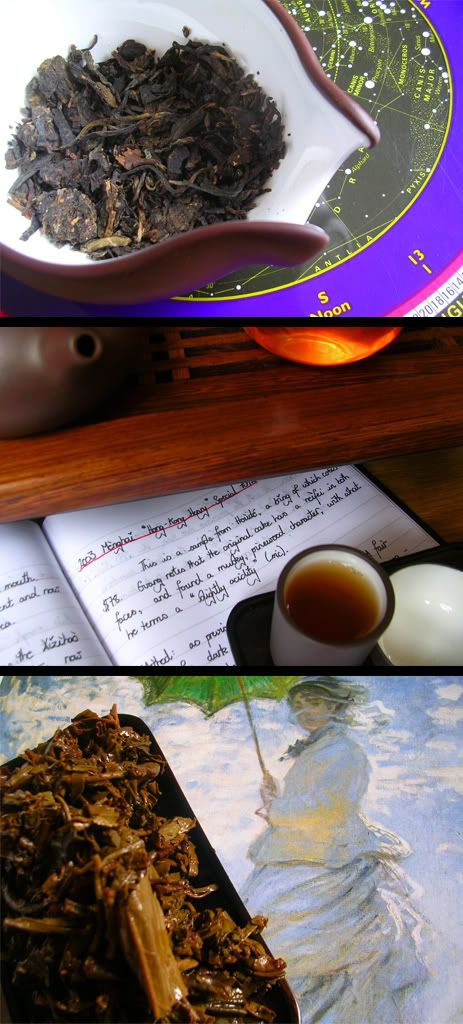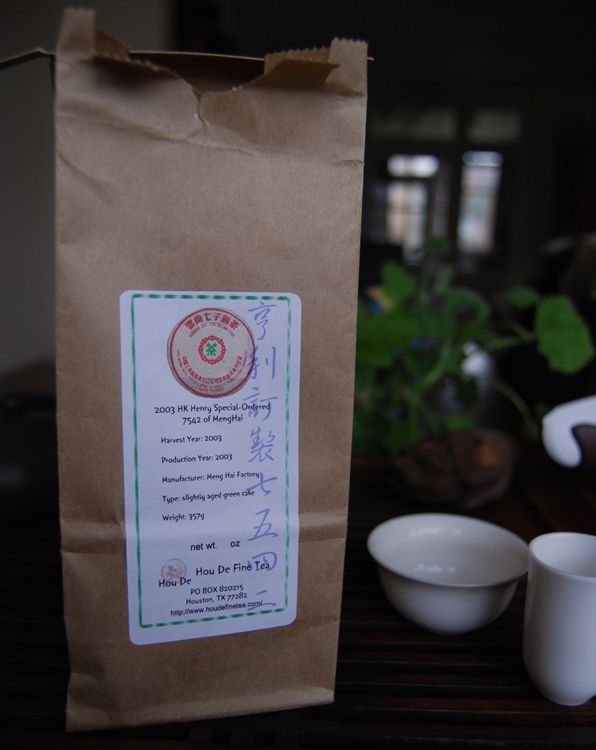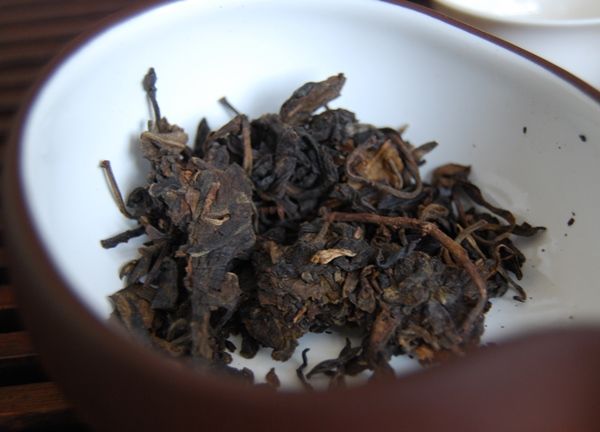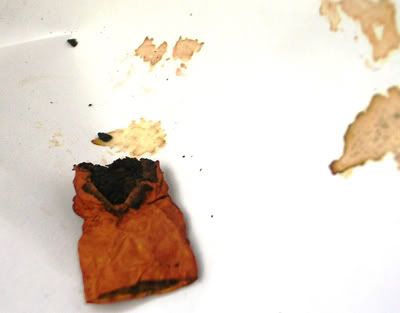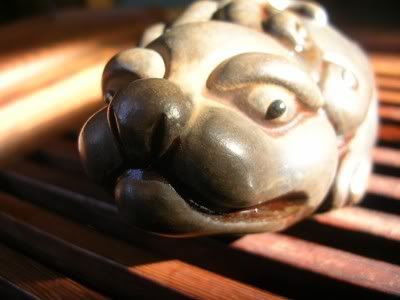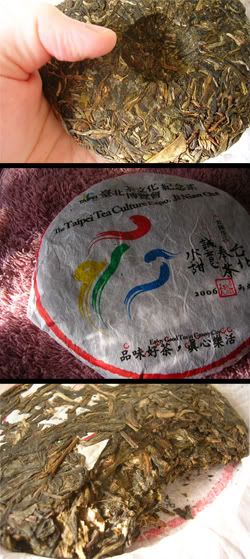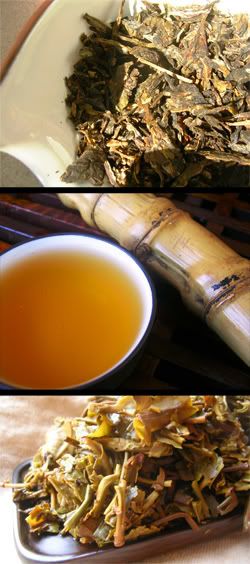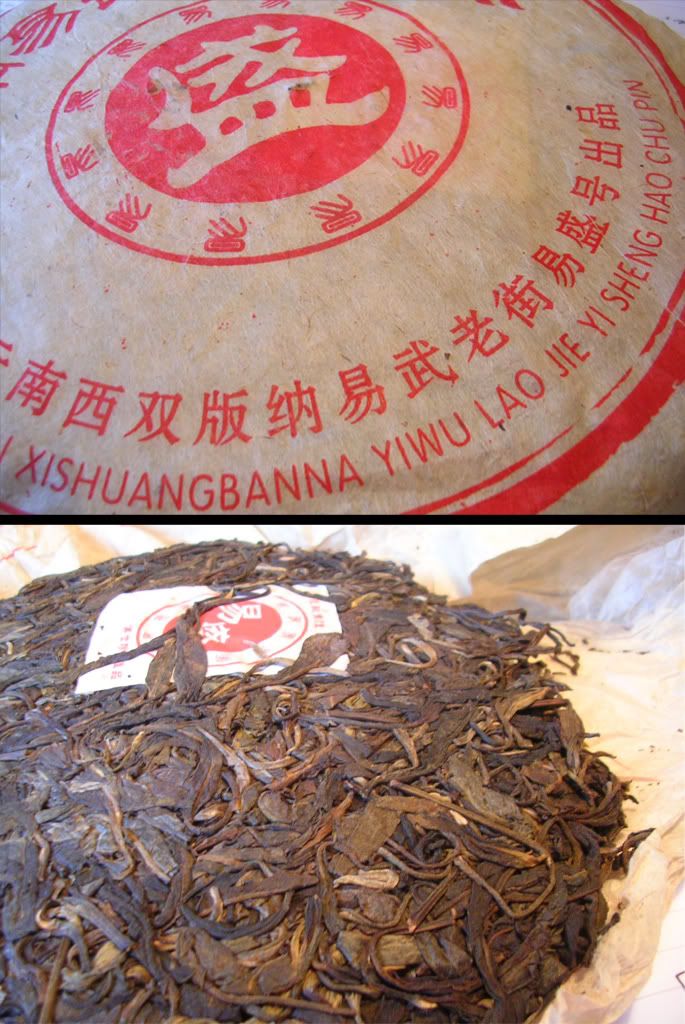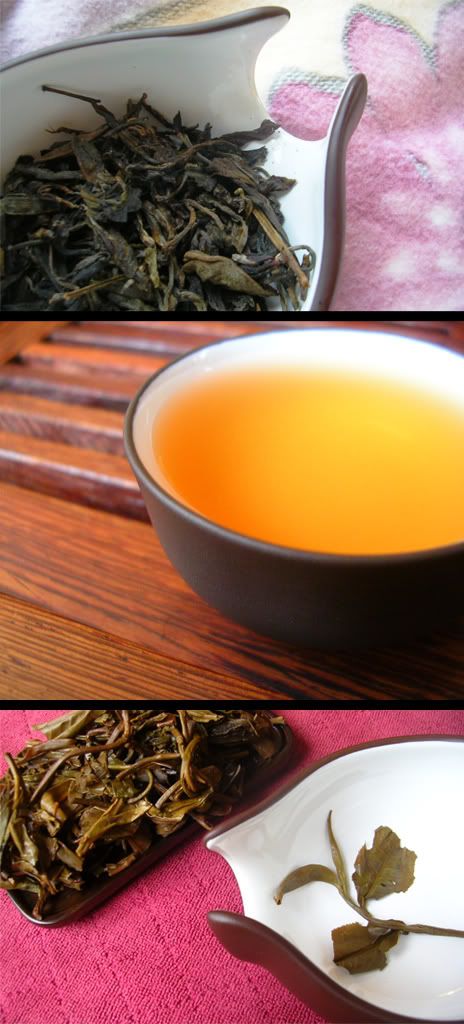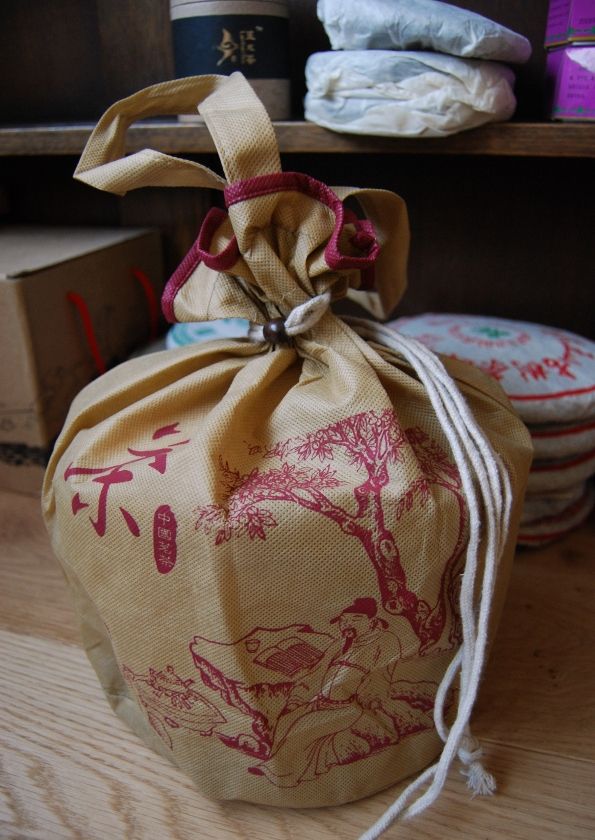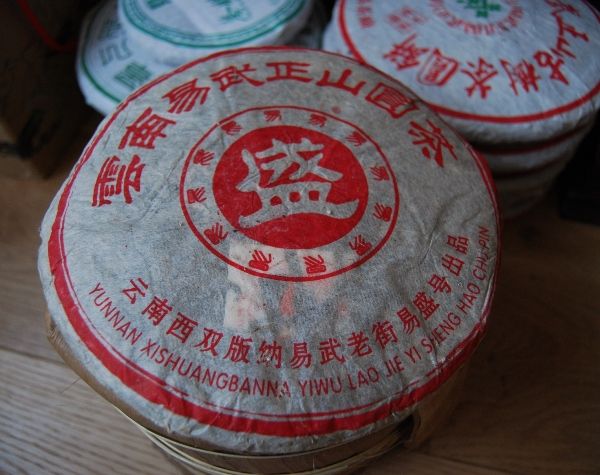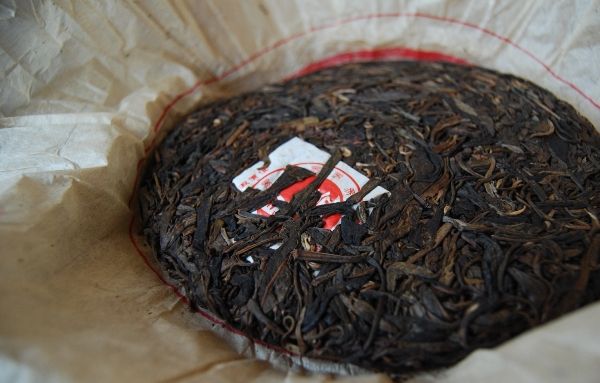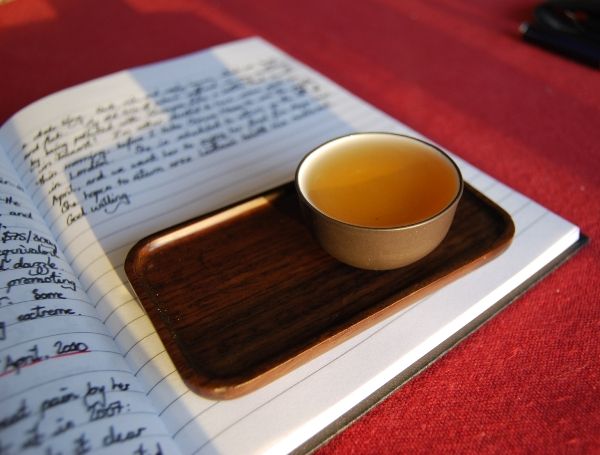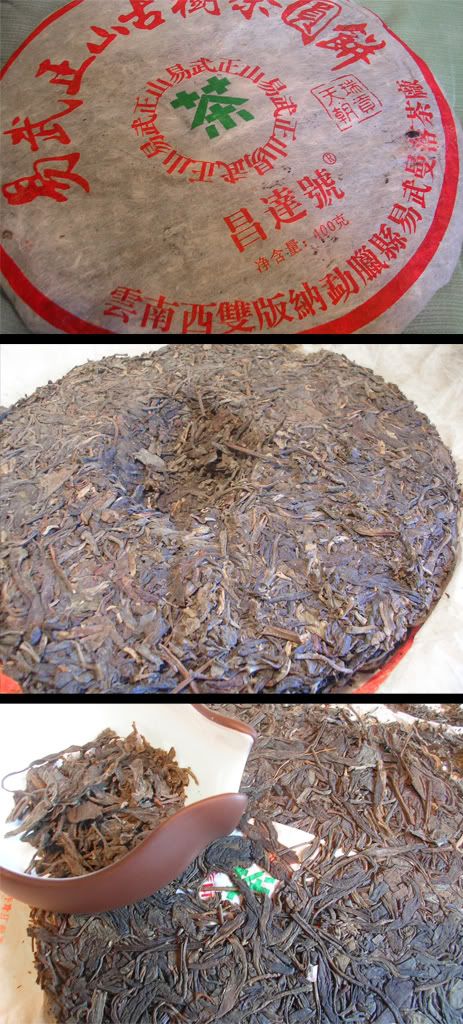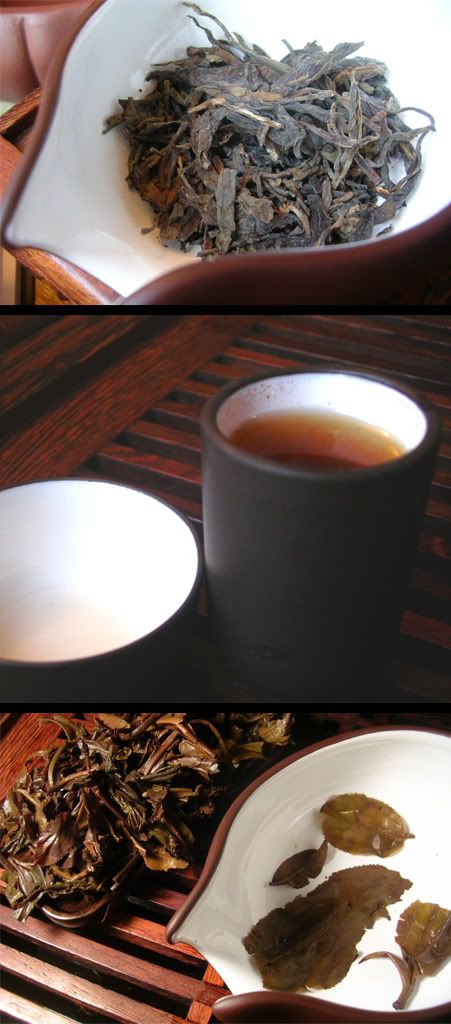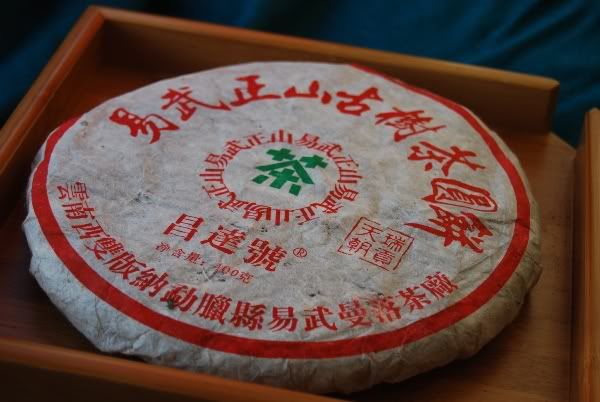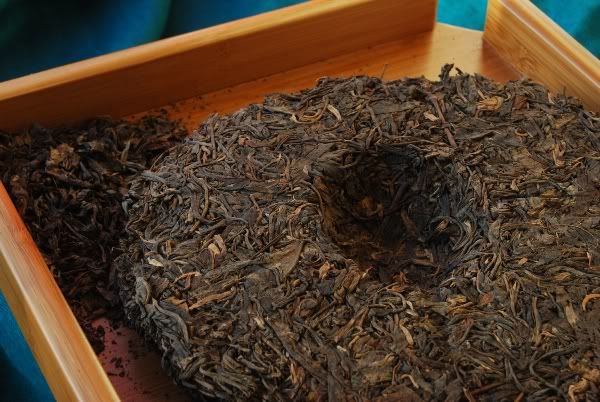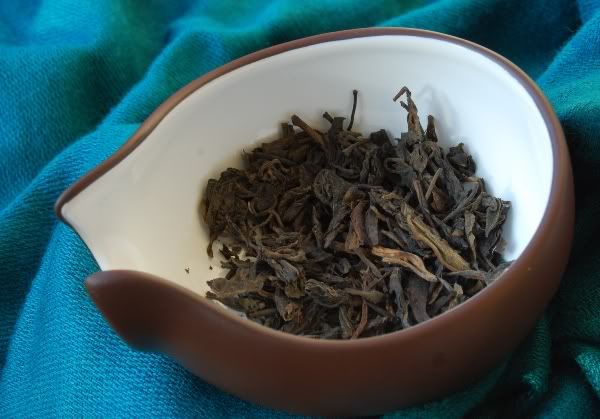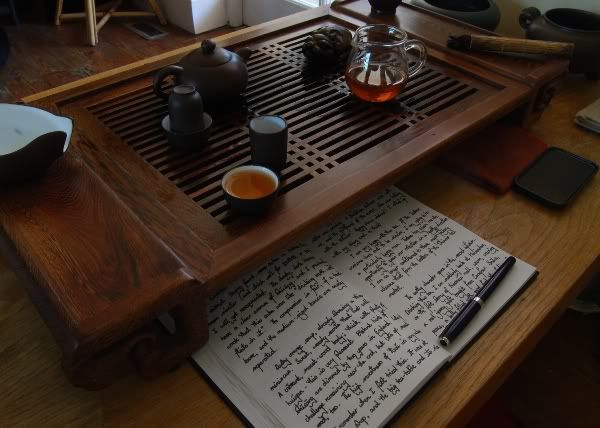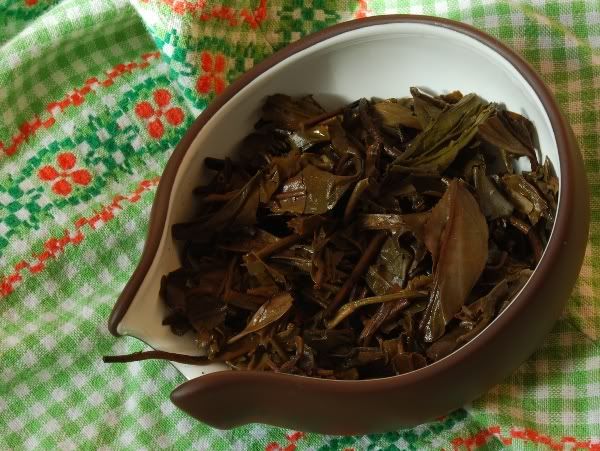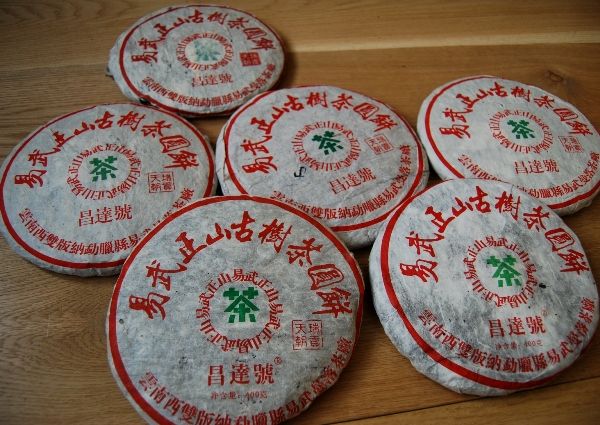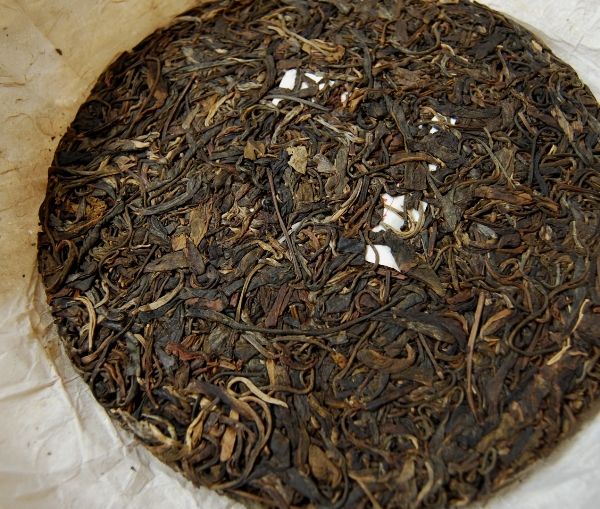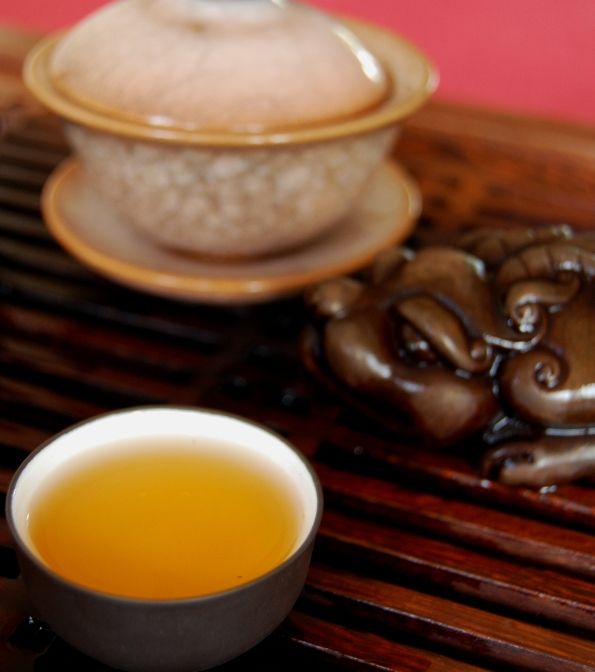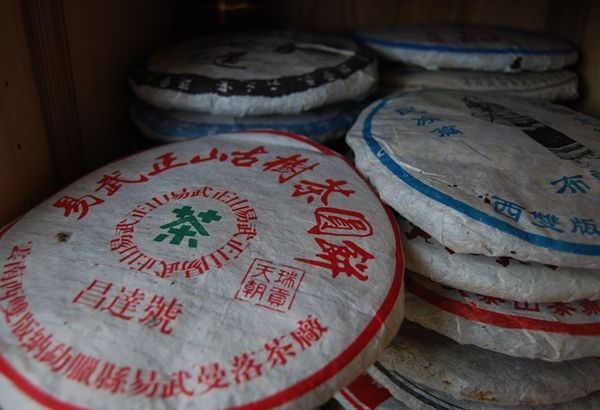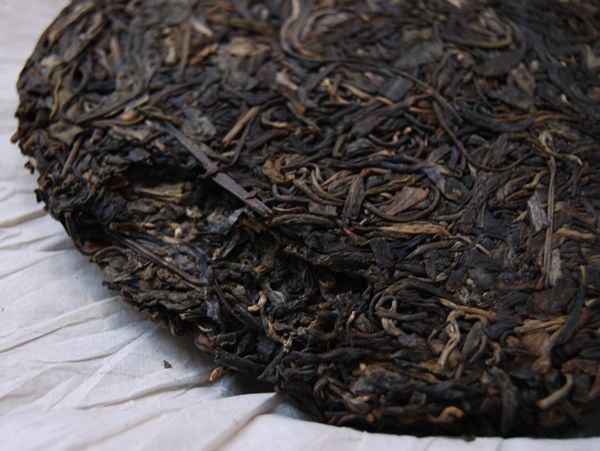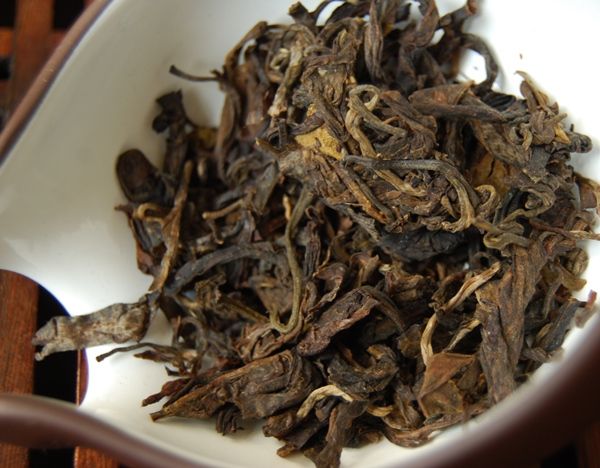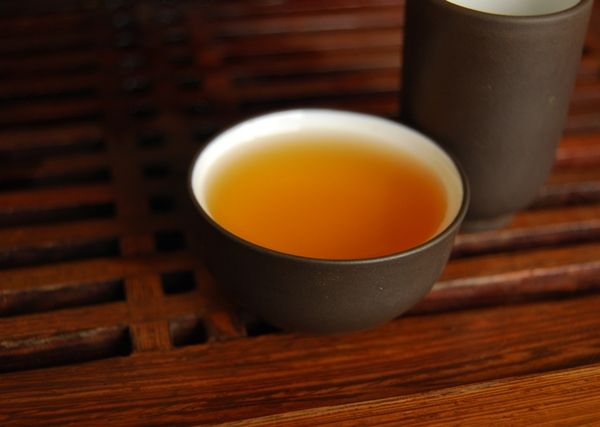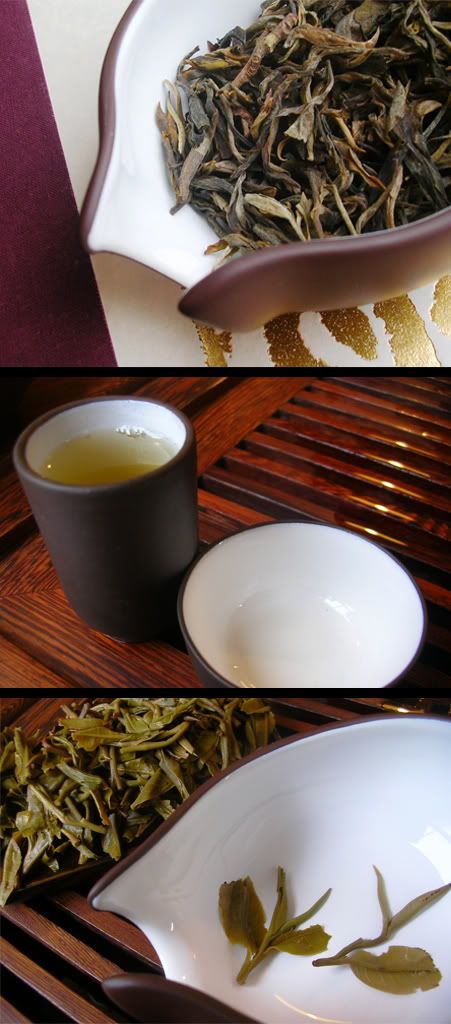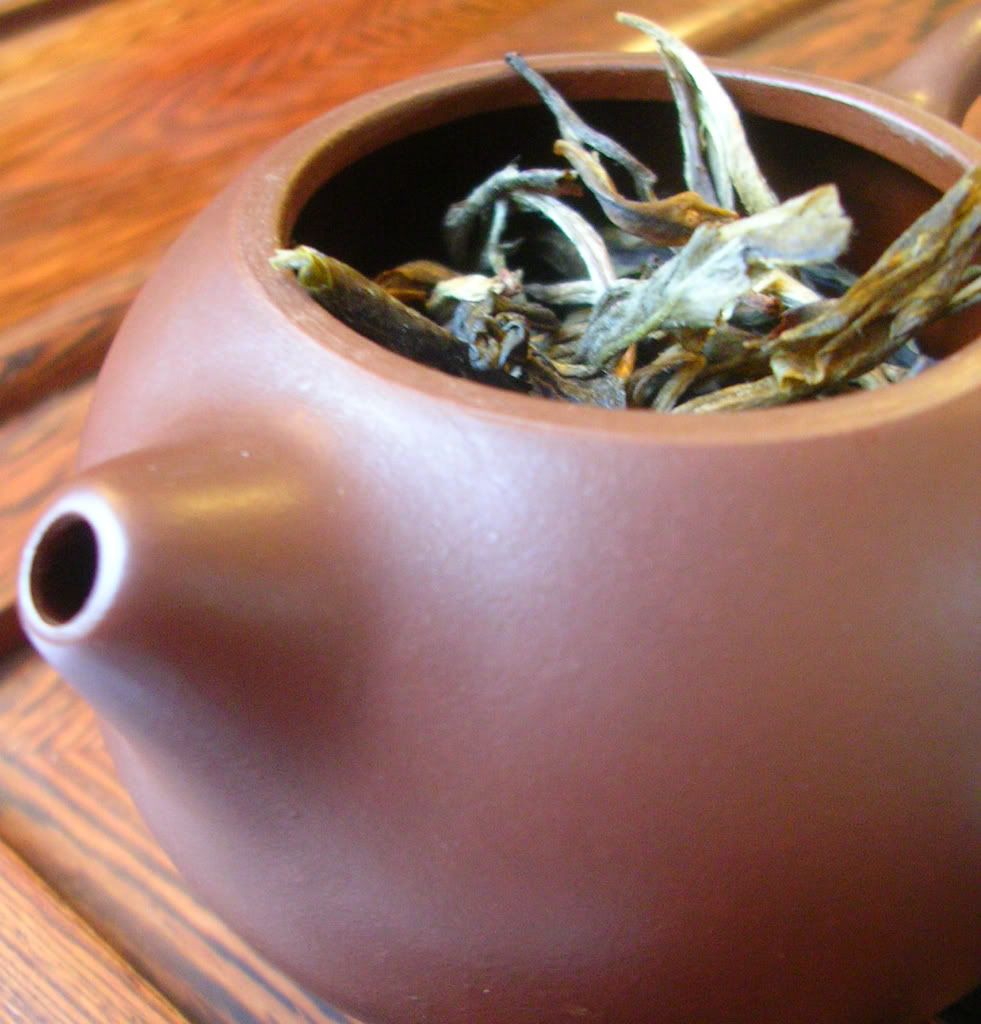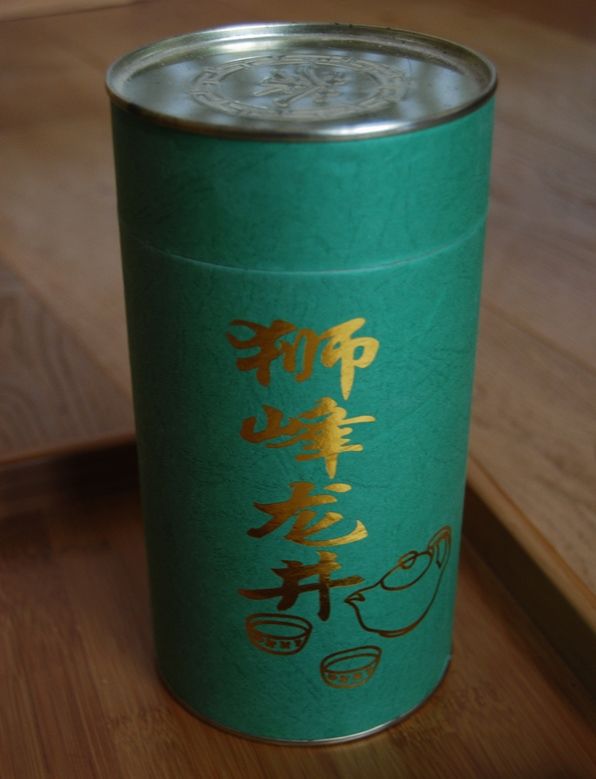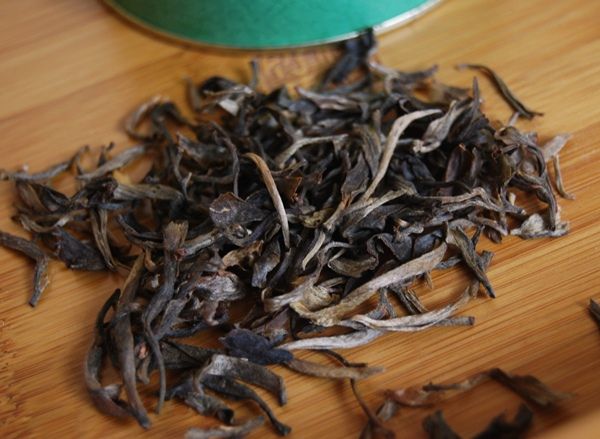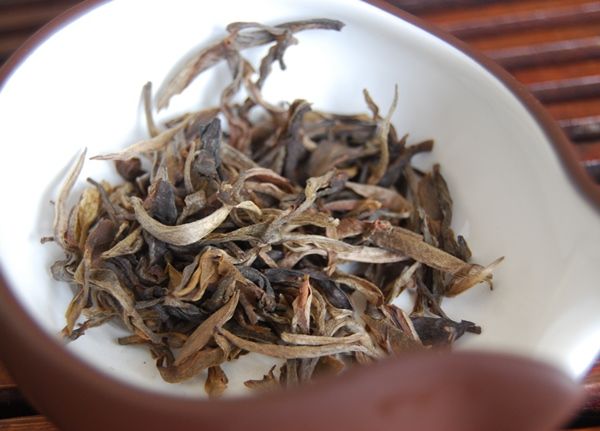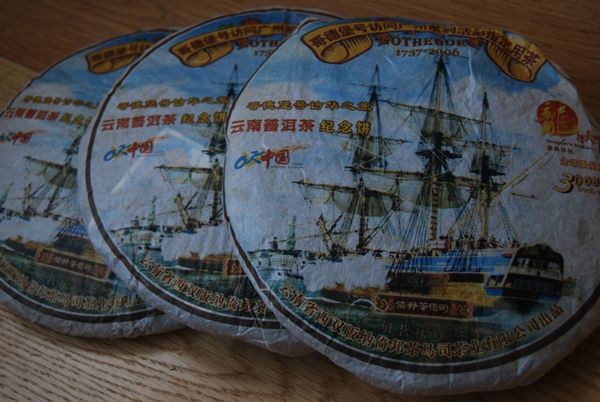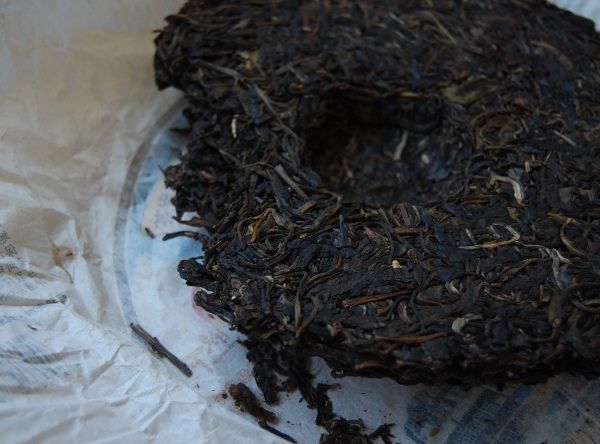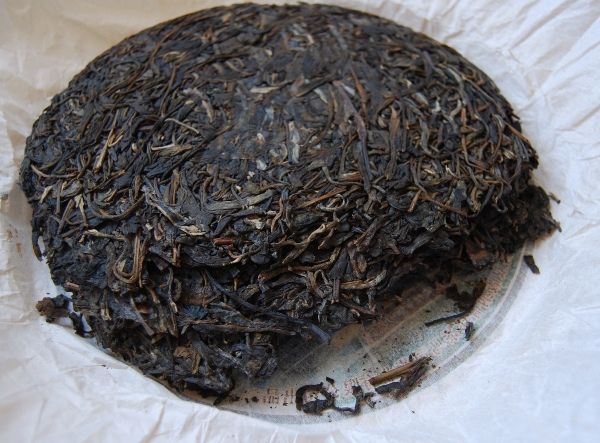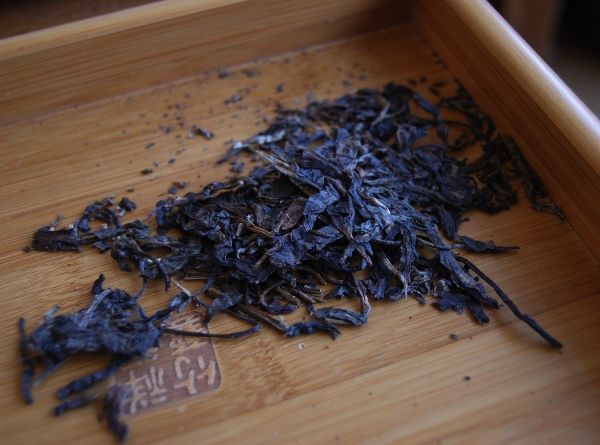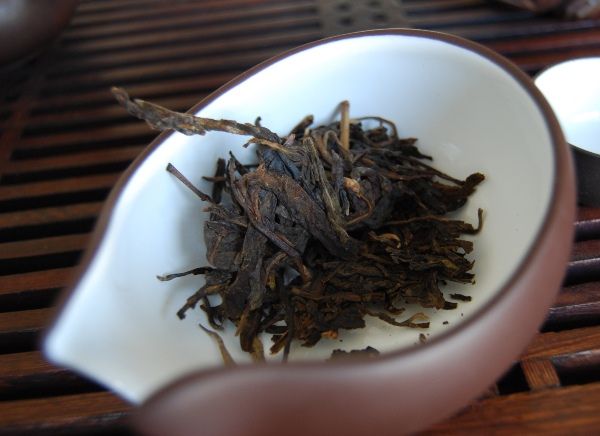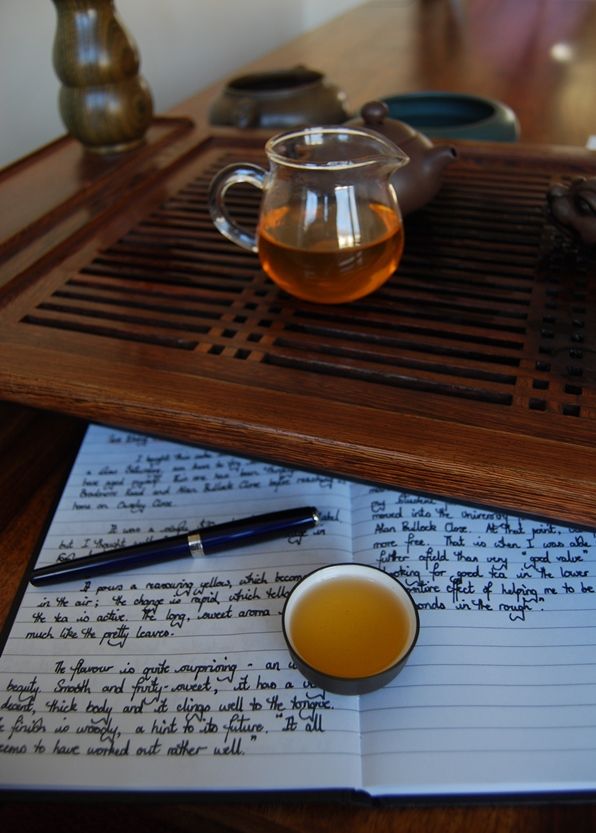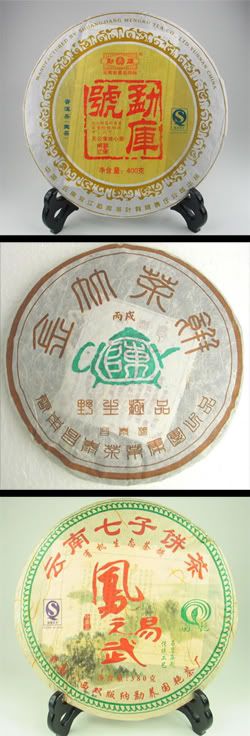Sold by Xiaomei in Maliandao, recommended by
MarshalN, it took me quite a while to work out that Yisheng was the name of the factory, and that it wasn't "yesheng" [wild]. Slowly, he catches on...
The leaves are quite dark already, and it's only 2 years old at the time of writing. They look dark, fairly whole, and are of decent length. In fact, as I write this from my study, the entire room is filled with the scent of them, as they skulk quietly (but aromatically) in the corner.
The scent is unmistakably that of sweet tobacco, which very much appeals to tastes. As it brews, the youth of the leaves becomes clear from the dark, yet clearly green, lid-scent.
Interestingly enough, the darkness of the leaves carries through to soup coloured rich orange, right from the outset. The aroma continues forever in the wenxiangbei: burned sugar and that all-pervasive tobacco.
The opening taste is something of grain, and dark fruits, before piling on the (pleasant) acidity at the back of the mouth, and leaving an unsurprising surfeit of tobacco in the nose. The acidity folds nicely into a solid, delayed huigan.
The spent leaves are not the most beautiful I've seen, but the tip systems are intact, and the texture of the individual leaves is healthy.
The character of the tea is very lively, clearing away the cobwebs of sleep as the sky above Magdalen College begins to lighten with the coming dawn. My lips and tongue tingle on contact with the soup, and there is a welcome ku under the tongue.
This feels like many of my favourite, tobacco-style shengpu cakes but wound back in time to the era of their youth.
Heartily recommended, should opportunity permit.
Addendum
27 March, 2008
After a further six months of storage, this cake continues to impress. It has good texture, a fine yunxiang of malt, a sweet leather flavour, and a decent huigan. It is darkening rapidly.
Addendum
10 April, 2010
Three years ago, I spent a summer in Beijing. It was a fun time, with plenty of tea-drinking in between lectures at Qinghua University. Most days, I would catch a taxi from the city's university quarter down south to the (in)famous Maliandao tea district. Guided by maps and e-mails from MarshalN and Bearsbearsbears, it was great fun. I've been back quite a few times since, but still have those maps burned into the back of my mind.
(Perhaps expectedly, the layout has changed a little since those days, with the pu'er mall having entirely disappeared.)
I do love Xiaomei's pu'er bags, which are great for storing loose cakes without tong wrappers
One of the successes of my first visit, three years ago, was this 2005 Yisheng cake. It was recommended by MarshalN, for a very decent price (sub-200 RMB), and I enjoyed drinking it with the collected drinkers in Xiaomei's lovely little shop. Some of my original notes are reproduced above.
Jauntily revealing its bamboo
Since then, I have searched in vain for further cakes to add to my rapidly-dwindling trio of originals. While all of Xiaomei's other cakes have turned up on Taobao in various places, this Yisheng has not. Being the finest of all my Maliandao cakes, it has been a recurring theme in my on-line treasure-hunts.
My old chum
This year, during our Christmas visit to Lei's family, we called in at Xiaomei's shop. Though the owner of the shop was not present herself, Little Brother was ably standing in - three years older, and three years wiser than before. He has turned into a professional tea-seller in his own right, and is a pleasure to drink with.
The cake is warped along its radial axis, which is amusing
Inevitably, the conversation eventually came around to the mystical 2005 Yisheng. Little Brother remarked that it was Xiaomei's favourite cake for recommending to folk that are after younger pu'er. The asking price was over 3.5x the price at which I originally bought it, which is testament both to the amount of increase that a good cake can command in three years, and to MarshalN's ability to obtain close-to-wholesale prices in his dealing with Xiaomei (my original cakes were priced at around 10% over wholesale price, thanks to MarshalN).
Could we have a tong at the original price, we ventured?
Nada's old plate welcomes an old acquaintance
Little Brother grinned. He tried, and failed, to call his Big Sister for approval three times. We quietly continued drinking the tea.
Eventually, he put down his telephone and took the decision himself, in our favour. I felt particularly guilty. Though not too guilty to take a whole tong at that price, of course.
Orange acquired through time, not artifice
He then went on to sell us a tong each of two other rather special teas, at less generous prices, as if to make up to his Big Sister, which was fine by us. (More on those two teas another day.)
Potent, throaty, sweet, and enduring - worthwhile keeping an eye out
It is both a delight and a relief to have a tong of this tea, finally, back with us at home. It tastes like a young version of an old tea, such is its elegance in aging. I am one of those stubborn types that heeds the call of pre-2006 pu'er, and Xiaomei's favourite, MarshalN's recommendation, and my own tastings have confirmed my love of this 2005 Yisheng.
Do keep the name in the back of your mind should you happen across it somewhere, or another from the same producer, as it is very much worth the time taken to try some.
Edit: this tea was seemingly made by the Yiwuzhengshan Tea. Co., also makers of Douji, back before the company stabilised its output (and its factory name!).
 Dark leaves and in good sized pieces. They are clearly scented with a certain "ash"-like character.
Dark leaves and in good sized pieces. They are clearly scented with a certain "ash"-like character.
